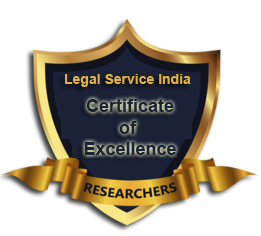Intellectual Property Rights: Moral And Economic Rights
In order to find out more about IPR and the rights situated with it like
Economic and Moral rights, we firstly need to understand what is IPR.
IP is a design or a representation that grants certain rights to the individual who created it; it is a product of that person's abilities, work, and intellect. IPRs are specific rights granted to the property's creator that only he may exercise in order to alter or make use of the property.
An IPR considers a few essentials like the human intellect or the use of human mind, their skills and their labour. Not only thinking about creating something is required but the actual result of your creativity should also take place. Economic rights allow the owners to derive financial benefits by their work while Moral rights allow authors/creators to take certain actions to preserve and protect their work.
Economic rights include:
Rights of reproduction, Rights of distribution, Rights related to Rent and importation. Copyright includes bundle of rights given to authors, creators, mainly comes with economic rights, as the name economic itself suggests that these rights give monetary benefits to the owner. Owner is the author who decides that how will his work be used. Example: If one writes a Novel, the owner decides how should it be published, who can use the story in a film, to sell the Novel to 3rd party, basically the monetary benefits situated with it . Taking permission from the author is called licence.
Rights of reproduction:
Is also called derivative work, derivative work is the work inspired by the original work.
Rights of distribution:
The owner/author gives authority to one as to how to distribute or commercialise your work also called doctrine of 1st Sale- National exhaustion, Regional exhaustion, International Exhaustion. Distribution Rights are also considered as economic rights.
Rental rights:
Giving rights to someone not permanently, even software rights nowadays are given on rent for sometime.
Doctrine of First sale � It means selling the creation, once the sale is complete, author can no more claim their economic rights and anyone can use or distribute it as the author has lost the rights once sold.
Economic rights include the author of the work who can authorise or prohibit the reproduction of work in various forms like printed publications or work, public performance of the work, broadcasting or any other type of communication of work to the public, translation of the work like twinning a novel into a screen play, all these things can be prohibited by the owner.
CASE LAW
In more clear words if we take an example of two children of a classroom who have written answers and are taught by the same teacher, referred to a common work, so their answers will also be similar to each other, if substantially similar but the work is from different source then it is acceptable, their answers might be very similar but they study from different study material. Both of their work will be considered as they haven't infringed each other's right.
MAI Systems Corporation Limited Vs Peak Computer Limited.
In this case, it was stated that authorising the work by unfair means is infringement of Copyright.
Section 57 of the Copyright Act state that Moral rights shall be legally recognised. It has brought change in the law making them important part of the Act.
Features of Moral Rights and how are they different from Economic rights:
Case Law
The preservation of IPRs is crucial. Firstly, inventors are granted exclusive rights to exploit their intellectual property (IP) for their own financial and practical gain. The pricing of the innovation, the marketing and distribution methods, and a myriad of other ways to make money and get a good return on investment are all completely up to the creator, registering IP enables the innovator to stop others from profiting financially.
Conclusion
IPR gives innovators and creators exclusive rights over their innovations and works, which promotes innovation. This exclusive right drives them to devote time and money to the creation of novel goods, procedures, and concepts. Every Intellectual property has both Economic as well as Moral right situated with it as it is created by someone or the other.
These rights are initially with the owner but the difference is that the moral rights stay with the owner for lifetime whereas the Economic rights are transferable as they just attach the monetary benefits, the one who buys it is the new owner.
Earlier Moral rights infringement was not seen as a violation but now one can be held liable for moral right infringement as protection of the real creator is also considered more important now, the name of the creator attached to it gives value to the creator so that they believe that their efforts are valued and even after selling the intellectual property they have the paternal rights attached. Therefore both the rights are important when we talk about intellectual property rights.
IP is a design or a representation that grants certain rights to the individual who created it; it is a product of that person's abilities, work, and intellect. IPRs are specific rights granted to the property's creator that only he may exercise in order to alter or make use of the property.
An IPR considers a few essentials like the human intellect or the use of human mind, their skills and their labour. Not only thinking about creating something is required but the actual result of your creativity should also take place. Economic rights allow the owners to derive financial benefits by their work while Moral rights allow authors/creators to take certain actions to preserve and protect their work.
Types Of IPR:
Patent:
A patent is a right granted to the author of a particular invention or discovery. It is the right of the one who first created it. It offers the protection for the process. The expression cannot be taken but the notion may. Thoughts that lead to the formation of IP are called ideas, but the finished product or one that results from those ideas is called expression.
Copyright:
The legal term "copyright" is used to refer to the ownership rights that authors and artists have over their creative works. The types of works protected by copyright include computer programmes, databases, ads, maps, and technical drawings in addition to books, music, paintings, sculptures, and films.
The goal of copyright law is to strike a balance between the rights of content creators and the public's desire for unrestricted access to that content. Several international agreements governing copyright and associated rights are managed by WIPO.
Trademark:
A trademark is a symbol that can be used to separate the products or services of one company from those of other companies. Trademarks have existed since the dawn of time, when craftspeople would sign or "mark" their creations.
Other IPR's:
- Industrial Design:
The decorative or aesthetic component of an object is represented by its industrial design. A design might include two-dimensional elements like patterns, lines, or colours, as well as three-dimensional elements like the shape or surface of an object.
- Geographical Indication:
Signs used on products with a specific geographical origin and traits, a reputation, or features that are fundamentally related to that location of origin are known as geographical indications and appellations of origin. A geographical indication often comprises the name.
- Trade Secret:
Trade secrets are intellectual property rights on private knowledge that can be licenced or sold. It is considered an unfair practise and a breach of the trade secret protection when others obtain, utilise, or disclose such secret knowledge without authorization in a way that is inconsistent with honest commercial practises.
- Industrial Design:
Economic Rights
Economic rights are given to the owner of the work. The author decides how the property will be used or how others can use it with permissions, the license is granted to them by the owner himself. They can authorise or prohibit 3rd parties from using their work or for commercialization.Economic rights include:
Rights of reproduction, Rights of distribution, Rights related to Rent and importation. Copyright includes bundle of rights given to authors, creators, mainly comes with economic rights, as the name economic itself suggests that these rights give monetary benefits to the owner. Owner is the author who decides that how will his work be used. Example: If one writes a Novel, the owner decides how should it be published, who can use the story in a film, to sell the Novel to 3rd party, basically the monetary benefits situated with it . Taking permission from the author is called licence.
Rights of reproduction:
Is also called derivative work, derivative work is the work inspired by the original work.
Rights of distribution:
The owner/author gives authority to one as to how to distribute or commercialise your work also called doctrine of 1st Sale- National exhaustion, Regional exhaustion, International Exhaustion. Distribution Rights are also considered as economic rights.
Rental rights:
Giving rights to someone not permanently, even software rights nowadays are given on rent for sometime.
Doctrine of First sale � It means selling the creation, once the sale is complete, author can no more claim their economic rights and anyone can use or distribute it as the author has lost the rights once sold.
Economic rights include the author of the work who can authorise or prohibit the reproduction of work in various forms like printed publications or work, public performance of the work, broadcasting or any other type of communication of work to the public, translation of the work like twinning a novel into a screen play, all these things can be prohibited by the owner.
CASE LAW
Landbroke Limited Vs William Hill Limited Limited
This case was related to reproduction copying. The economic rights of the owner cannot be used without his permission. There could be substantially similar result by the independent work.In more clear words if we take an example of two children of a classroom who have written answers and are taught by the same teacher, referred to a common work, so their answers will also be similar to each other, if substantially similar but the work is from different source then it is acceptable, their answers might be very similar but they study from different study material. Both of their work will be considered as they haven't infringed each other's right.
MAI Systems Corporation Limited Vs Peak Computer Limited.
In this case, it was stated that authorising the work by unfair means is infringement of Copyright.
Moral Rights
Moral rights define the relationship between the author and his work. No financial benefits arise out of it. Earlier there was no provision related to infringement of Moral rights but in recent times if anybody violates a moral right it will be infringement and a law suit can be instituted. Even if a person has transferred their economic rights to someone else but the moral rights always remain with the owner. The creator is the father of the work just like the father of a son, even if the son goes to different places but the origin always remains the same.Section 57 of the Copyright Act state that Moral rights shall be legally recognised. It has brought change in the law making them important part of the Act.
Berne Convention: Article 6-b(subclause). Article 6b:
- Independently of the author's economic rights, and even after the transfer of the said rights, the author shall have the right to claim authorship of the work and to object to any distortion or other derogatory action in relation to the said work, which would be prejudicial to his honor or reputation.
- The rights granted after his death, be maintained, at least until the expiry of the economic rights, and shall be exercisable by the persons or institutions authorized by the legislation of the country where protection is claimed.
- Right to Paternity Assertion: It includes publicly declaring the name of the owner in which certain kind of appreciation is attached. Example: name of the author in reproduction and adoption of the work. Pseudonyms - Sometimes author doesn't give their real name along with their work, instead a pen name in order to not disclose their identities. Paternity - The person is the father of the work, they can declare publicly that they have created it.
- Right to Integrity: Materially distorting the work, altering it, destroying even if it is sold as the real work will be gone, only the father can distort or destroy it and not even the new owner.
- Right against False attribution: Falsely representing yourself as the owner is unacceptable as the real owner can come up and claim that the other person is falsely representing his work.
- Right to privacy: The owner has the right to keep his work with himself as he is the creator initially, it is up to him whether to keep it private or not.
- Right to publish the work: Once the work is complete, the creator has the right to publish it. Nobody else can publish on his behalf as he is the creator.
- Right to withdraw published work from sale: Example: if a novel made by "A" is getting sold, he can reclaim it.
- Right to withdraw the work or destroy it until and unless it is against public policy.
- Right to prevent violation of the author's expression.
Features of Moral Rights and how are they different from Economic rights:
- No monetary benefits.
- Builds a relationship between the author and his work.
- Earlier there was no infringement of Moral rights, but now suit can be brought for moral rights infringement.
- Moral rights cannot be transferred but economic rights can be transferred. These are the independent rights of the author's economic rights.
- Even if a person has transferred his economic rights, Copyright and his work entirely to someone else, moral rights remain entirely with the owner of the work.
- Moral rights are given against all subject matters except sound recordings.
- There is a waiver of moral rights as per Section 57 if the Moral right is against public policy.
- When something is against integrity, image of the society or of the country or the government, then one cannot use your moral rights.
- Example: If I have created a Monument, I cannot take it away with me or take it home even if I am the owner or the creator because it is a government property.
Case Law
- Mannu Bhandari v/s Kala Vikas Pictures Limited
A writer wrote a Novel and Kala bought it, just a right to reproduce it into a movie but in the movie, they slightly changed the plot, Mannu Bhandari saw the movie and claimed that my Novel and the actual movie have differences and that his Novel has been distorted, so the credits of Mannu were removed from the movie, it was held that the movie will no longer display the name of the author and the novel that it is inspired by his Novel or not, but if there was no assent then it was accepted.
- Amarnath Sehgal v/s Union of India
When the Vigyan Bhawan was made, Amarnath was the person who made 2 (Murti) Statues there. When the renovation was done his Murti got destroyed not intentionally but by negligence of the workers and then it was removed without even considering it to be repaired or put back in a better condition. Amarnath being the creator, the father of the work has the paternity right over it meaning that even if he did not have the authority but at least his name was attached to his work.
Need To Protect Intellectual Property
IP must be protectedThe preservation of IPRs is crucial. Firstly, inventors are granted exclusive rights to exploit their intellectual property (IP) for their own financial and practical gain. The pricing of the innovation, the marketing and distribution methods, and a myriad of other ways to make money and get a good return on investment are all completely up to the creator, registering IP enables the innovator to stop others from profiting financially.
Conclusion
IPR gives innovators and creators exclusive rights over their innovations and works, which promotes innovation. This exclusive right drives them to devote time and money to the creation of novel goods, procedures, and concepts. Every Intellectual property has both Economic as well as Moral right situated with it as it is created by someone or the other.
These rights are initially with the owner but the difference is that the moral rights stay with the owner for lifetime whereas the Economic rights are transferable as they just attach the monetary benefits, the one who buys it is the new owner.
Earlier Moral rights infringement was not seen as a violation but now one can be held liable for moral right infringement as protection of the real creator is also considered more important now, the name of the creator attached to it gives value to the creator so that they believe that their efforts are valued and even after selling the intellectual property they have the paternal rights attached. Therefore both the rights are important when we talk about intellectual property rights.
Award Winning Article Is Written By: Ms.Snigdha Kiran
Authentication No: MY350040278632-14-0523
Share this Article
Popular Articles
How To File For Mutual Divorce In Delhi

How To File For Mutual Divorce In Delhi Mutual Consent Divorce is the Simplest Way to Obtain a D...
Increased Age For Girls Marriage

It is hoped that the Prohibition of Child Marriage (Amendment) Bill, 2021, which intends to inc...
Facade of Social Media

One may very easily get absorbed in the lives of others as one scrolls through a Facebook news ...
Section 482 CrPc - Quashing Of FIR: Guid...

The Inherent power under Section 482 in The Code Of Criminal Procedure, 1973 (37th Chapter of t...

Home | Lawyers | Events | Editorial Team | Privacy Policy | Terms of Use | Law Books | RSS Feeds | Contact Us
Legal Service India.com is Copyrighted under the Registrar of Copyright Act (Govt of India) © 2000-2025
ISBN No: 978-81-928510-0-6









Comments